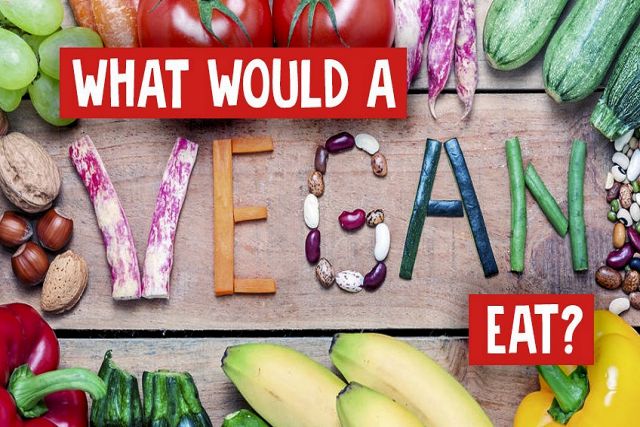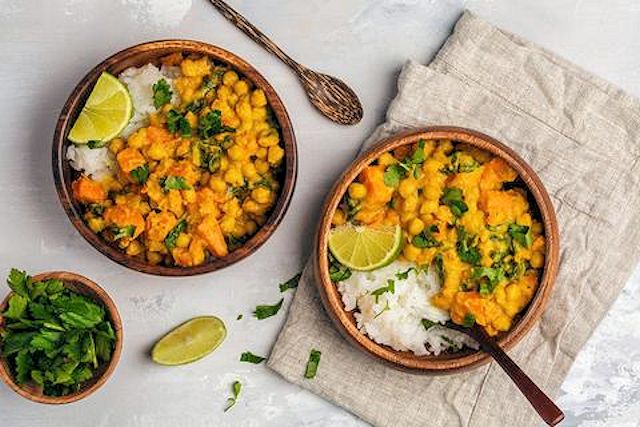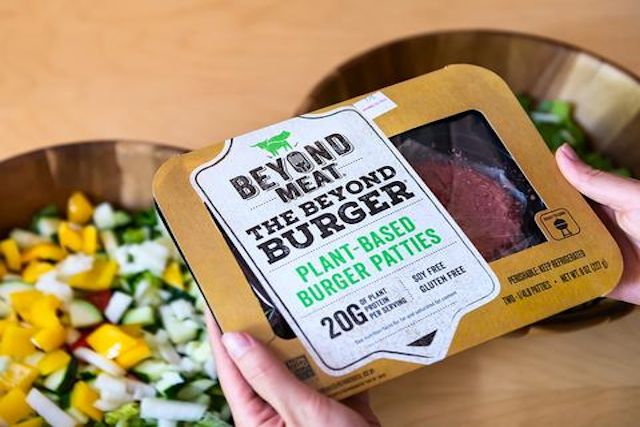
What Does A Vegan Eat
Learn what you can and can't eat as a vegan and find out about the benefits and challenges of a balanced healthy diet.
When you decide to change what you eat and look to change over to a vegan diet or simply look to reduce your animal product consumption, one question comes to mind …
“WHERE WILL YOU GET YOUR PROTEIN FROM”
For many this can become a tiresome question – we know this very well! – but at the same time, it’s something that many who are just starting out with this kind of lifestyle change wonder, and for good reason.
Simply, plant-based foods DO contain less protein per mouthful, with a less ‘optimal’ amino acid ratio, and so additional effort needs to be made compared to someone eating more animal products during their day. To help out, we’ve listed our top 10 tips for getting enough protein on a vegan diet below – we hope they help!
1. SO WHAT DO VEGANS EAT
Firstly, know how much protein your body really needs so when you’re looking to get the right amount of something, your first step should always to be find out exactly how much you should be aiming for! Your protein needs are different depending on your goals, mostly, with the below figures being the most commonly cited:
Fat loss: 2.3-3.1g per kilogram of lean body mass. To calculate lean body mass either:
- Estimate or measure your bodyfat percentage, then subtract this from your total body weight. This is reasonably easy to do if you’re relatively lean but if you’re of average bodyweight or a little higher it gets trickier, so you could use the option below
- Find out what the ideal weight is, in theory, from your height (you can do this with a BMI chart) and use that. Unless you’re extremely muscular it’ll give a good estimate of your lean mass
Muscle gain: 1.6-2.2g per kilogram of total body weight
General health and fitness: 1-1.4g per kilogram of total body weight
This, along with your other nutrient needs, can be calculated automatically for you if you head to the Awesome Supplements Calorie Calculator, which you’ll find HERE.
With this knowledge in place, let’s look at how you can start to meet your needs…
2. TRACK IT
When eating an omnivorous diet it’s relatively easy to meet your protein needs by thinking ‘this is my protein source and I’m having a large portion of it, so I’ll get plenty of protein’ but on a plant-based diet that’s not usually the case. As such, objectively tracking the amount of protein you eat can be extremely beneficial. A number of apps exist for this kind of thing, but MyFitnessPal is the most popular and (in our opinion) rightly so as it’s the easiest to use.
Track your meals before you eat them, at least for the first week, and see how much protein there is in what you eat/how much of it you need to eat at a sitting in order to meet your needs. Without measuring you’re just guessing, so get objective until you get used to the composition of your meals.
![]()
3. TRACK ALL OF IT
On an omnivorous diet, it’s common to compartmentalise your meals a lot. This has my protein, that has my carbs, my fat is there, etc, but when looking to get a higher protein intake on a plant-based diet that’s not really how it needs to work. Instead, your focus needs to be on all of the macronutrients in all of the foods – in other words, you look at macros meal to meal, rather than item by item.
Your bean burger may only have 8g of protein compared to the 25 in the regular burger, but how much is in the wholemeal bun How much in the vegan cheese How much in the potatoes did you use to make chips and so on
This seems extremely simple, but it represents a significant shift in thinking compared to building a meal containing animal products.
4. VARY YOUR SOURCES
When we talk about eating protein, it would be more scientifically accurate to talk about eating proteins – tiny clusters of smaller building blocks known as amino acids that are produced by plant and animal cells in order to perform certain functions. We eat these proteins in order for our body to take the building blocks and then use them to do other stuff.
So you eat a bean, that bean contains proteins, those proteins are made from amino acids, and so your body is able to break the proteins down and use the amino acids to make its own proteins – maybe some keratin for your hair, or a myosin in your muscle tissue.
There are 20 amino acids relevant for human nutrition, of which 9 are essential, meaning that our body can’t make them out of other stuff and so we need to eat them. Almost every food that you consume contains all 9 essential amino acids, but unfortunately not necessarily in the ideal proportions for our needs. Because of this, some proteins are referred to as ‘complete’ while others are ‘incomplete’ – both groups contain everything, so it’s a bit of a misnomer, but the point is that some are more useful on their own for human nutrition and some are less useful. In the simplest terms possible, plant-based proteins are almost all incomplete, with the opposite being true of animal proteins.
The key here, however, is useful or not useful ‘on their own’.
By combining various different incomplete proteins together, you consume a huge range of different amino acid profiles that – over the course of a day – complement each other. It used to be said that this needed to be done per meal, but this is not true. Provided you’re consuming a wide range of plant-based proteins across the day (legumes, grains, soy-based foods, micoprotein (Quorn), and more recently emerging meat replacements) you’ll do just fine.
5. WITH THAT SAID, FIND YOUR STAPLES
Most omnivores have a few staple protein sources that they rotate through the week, typically chicken breast, eggs, tuna, steak and beef mince, or some other similar roster – the vegan dieter would benefit massively from having a similar list of go-to’s that they’re happy to eat 3-4 times or more per week, cooked in different ways. That could be a tin of lentils, some Quorn fillets, or even a protein shake, but it’s useful to have things to fall back on rather than endlessly thinking of new foods (unless that’s your thing!).

6. LOOK TO MORE ETHICALLY DIVERSE FOOD
If you’re ever stuck for recipe ideas, look to different kinds of cuisine. In the UK we’re lucky as our cuisine is pretty ethnically diverse anyways, but it’s good to know that there are many areas of the world where more plant-based eating is traditional – primary examples are Japan and India. Both incredible resources for delicious meals, many of which are meat-free.
7. BEWARE OF FALSE FRIENDS IF YOUR CALORIE NEEDS AREN’T HUGE
There are many plant-based foods that are high in protein, but that does not necessarily mean that they are high in protein relative to their calorie content. This does not mean that these foods are to be avoided, or even that they can’t be included in your meals even on lower calorie intake, but if you’re trying to get 30g of protein from peanut butter or hummus alone then you’re going to be consuming a lot of energy.
This goes back to the point above of looking at a whole meal instead of foods in isolation. Is peanut butter a good protein source Well, that just depends on what else you’re eating…
8. DON’T BE AFRAID TO USE POWDERS, JUST LIKE EVERYONE ELSE DOES
People on omnivorous diets use protein shakes. Whey protein, derived from milk, is the most popular form of protein powder by a country mile, and it’s being guzzled down by those who also eat the most concentrated forms of complete protein there is : meat, dairy, and eggs.
Because of this, no plant-based dieter should feel any guilt about topping up their protein intake with plant-based protein powder. They’re convenient, they’re easy, they are transportable, they’re very cheap protein gram for gram, and best of all they’re absolutely delicious.
At least they are if you try ours! If you’d like to try a sample click here, or just go here to dive in feet first with a tub. You won’t be disappointed.

9. MEAT SUBSTITUTES AREN’T THE ENEMY
Many looking to adopt a plant-based lifestyle have an idealised idea of how it will go, with them cooking up amazing recipes from scratch and eating entirely unprocessed food straight from nature – unfortunately, this is a little bit of a pipe dream for many, especially in the first month or two, and especially when it comes to consuming adequate amounts of protein.
During this transitionary period when you’re trying new recipes and tastes and generally looking at food in an entirely different way, meat substitutes can be an absolute lifesaver. Not necessarily something that you’d eat every day (if only because they can be pricy!), but having impossible burgers or pulled Oomph soya protein a few times per week to top up your protein intake can make your transition a little bit easier, and you can always phase these out later if you’d like to.
10. BATCH COOK LIKE CRAZY
And finally, once you DO have a high protein recipe for a soup or stew that works, make a LOT of it! It takes very little additional time to make 10 portions of something if you’re making 3 portions of it already, and if you do this you can very quickly fill your freezer with easy-grab meals.
Similarly, making large batches of sides like hummus rather than just what you need at the moment can mean you have something ready to add to meals during the week, topping up the taste, micronutrient, and protein value of whatever you were going to eat anyway. Batch cooking is a brilliant tool for literally anyone, and those adopting a vegan diet are no different!
FINAL THOUGHTS
Overall, swapping to a plant-based diet isn’t as huge a step as many make it seem. With some planning and a little forethought, it can be an easy, enjoyable experience.
That planning and forethought DO need to be done, however, and we hope that these 10 tips can get you on the right track from the start!
And to begin the journey and as with all forms of dietary intake, make sure that you’re getting the right vitamins and nutritional intake!
NEWSLETTER
Be sure to subscribe to our periodical newsletter so whenever we have any vegan-related news or advertisers, you’ll be the first to know!
ADS BY GOOGLE
